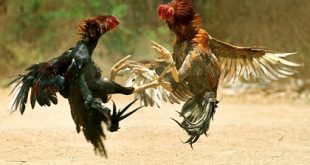Mice, small rodents belonging to the order Rodentia, are fascinating creatures with complex anatomy and physiology. Their bodies are remarkably adapted to survival, allowing them to navigate their environments, locate food, and evade predators. In this article, we will explore the key body parts of a mouse and their specific functions, delving into how each contributes to the mouse’s daily life and survival.
A Body Part of A Mouse

1. Head and Sensory Organs
The head of a mouse houses essential sensory organs that are crucial for its survival. These organs include the eyes, ears, nose, and mouth, each playing a unique role in perceiving the environment.
- Eyes: Mice have relatively small, round eyes positioned on the sides of their heads, providing them with a wide field of vision. Their vision is adapted to low-light conditions, making them nocturnal animals. Mice rely heavily on their vision to detect movement and potential threats in their surroundings. However, their eyesight is not sharp, and they are believed to see the world in shades of blue and green.
- Ears: A mouse’s ears are large relative to its head and provide acute hearing. They can detect a wide range of frequencies, including ultrasonic sounds. This ability is critical for communication, especially during mating or when sensing danger. Mice can rotate their ears independently to pinpoint the direction of a sound.
- Nose and Whiskers: The nose of a mouse is highly sensitive and is equipped with olfactory receptors that enable it to detect smells. Smell is one of the most developed senses in mice, helping them locate food, recognize territory, and detect predators. Whiskers, or vibrissae, are long, sensitive hairs around the nose and mouth. These whiskers are tactile sensors that help mice navigate in the dark and detect textures and objects in their environment.
- Mouth and Teeth: Mice have sharp incisors that grow continuously throughout their lives. These teeth are essential for gnawing on food and materials. Their mouth also contains taste buds, allowing them to distinguish between safe and harmful substances.
2. The Torso
The torso of a mouse houses vital organs and systems that sustain life. It includes the skeletal structure, muscular system, and internal organs.
- Skeletal System: The skeleton of a mouse is lightweight and flexible, enabling it to squeeze through tiny spaces. The ribcage protects the heart and lungs, while the spine provides structural support and mobility.
- Muscular System: Mice possess strong and agile muscles, particularly in their legs, allowing them to jump, climb, and run at high speeds. Their muscular system is also responsible for their characteristic twitching movements, which help them react quickly to threats.
- Internal Organs: The torso contains critical organs such as the heart, lungs, stomach, intestines, liver, and kidneys. The heart and lungs work together to circulate oxygen-rich blood throughout the body. The stomach and intestines are responsible for digesting food and absorbing nutrients, while the liver and kidneys play a role in detoxification and waste removal.
3. Limbs
Mice have four limbs, each adapted for specific functions that aid in their mobility and survival.
- Front Limbs: The front limbs are shorter than the hind limbs and are equipped with five fingers. These limbs are highly dexterous, allowing mice to grasp objects, dig burrows, and groom themselves. The claws on their fingers aid in climbing and gripping surfaces.
- Hind Limbs: The hind limbs are longer and more powerful than the front limbs. They are designed for jumping and running. Mice can leap several times their body length to escape predators or navigate obstacles. Their strong hind limbs also enable them to stand upright on their hind feet when needed.
4. Tail
A mouse’s tail is a remarkable feature that serves multiple purposes.
- Balance: The tail acts as a counterbalance when mice climb or run across narrow surfaces, helping them maintain stability.
- Thermoregulation: The tail is covered in sparse fur and has blood vessels close to the surface, allowing it to regulate body temperature. In hot conditions, heat is dissipated through the tail.
- Communication: Mice use their tails to convey social signals. For example, they may flick their tails to indicate annoyance or use tail movements during courtship.
5. Skin and Fur
The skin and fur of a mouse provide protection and sensory functions.
- Fur: The fur acts as an insulator, keeping the mouse warm in cold environments. It also offers camouflage, helping mice blend into their surroundings and avoid predators.
- Skin: The skin is the first line of defense against environmental hazards, such as bacteria and physical injuries. It is equipped with sensory receptors that detect touch, pressure, and pain.
6. Reproductive Organs
The reproductive organs of mice are crucial for their survival as a species. Mice have a high reproductive rate, which is one of their most notable characteristics.
- Male Reproductive System: Male mice have testes that produce sperm and hormones like testosterone. The reproductive organs are adapted for mating and ensuring the continuation of their genetic lineage.
- Female Reproductive System: Female mice have ovaries, a uterus, and mammary glands. The uterus supports the development of embryos, while the mammary glands provide milk to the offspring. Female mice are capable of producing multiple litters in a single year, each containing several pups.
7. Nervous System
The nervous system of a mouse is highly developed, enabling it to respond rapidly to stimuli.
- Brain: The brain of a mouse controls its behavior, sensory processing, and bodily functions. Although small, it is highly efficient, allowing mice to learn, remember, and adapt to their environment.
- Spinal Cord and Nerves: The spinal cord connects the brain to the rest of the body, transmitting signals to and from the limbs and organs. Peripheral nerves extend throughout the body, allowing mice to sense and react to their surroundings.
8. Circulatory System
The circulatory system is responsible for delivering oxygen and nutrients to the body while removing waste products.
- Heart: The heart of a mouse is small but beats rapidly, maintaining efficient blood circulation.
- Blood Vessels: Arteries, veins, and capillaries transport blood to and from the heart. This system ensures that all organs receive the oxygen and nutrients they need to function.
9. Digestive System
The digestive system of a mouse is designed for processing a variety of foods, including grains, seeds, and plant material.
- Mouth and Teeth: The initial breakdown of food occurs in the mouth, where incisors cut and grind food.
- Stomach and Intestines: The stomach digests food with the help of enzymes, while the intestines absorb nutrients and water.
- Liver and Pancreas: These organs produce enzymes and hormones that aid in digestion and metabolism.
Conclusion
The body of a mouse is a marvel of evolution, with each part playing a specific and vital role in its survival. From their keen senses and agile limbs to their efficient internal organs and reproductive capabilities, mice are well-equipped to thrive in a variety of environments. Understanding their anatomy and functions not only highlights the complexity of these small creatures but also underscores their adaptability and resilience in the natural world.


